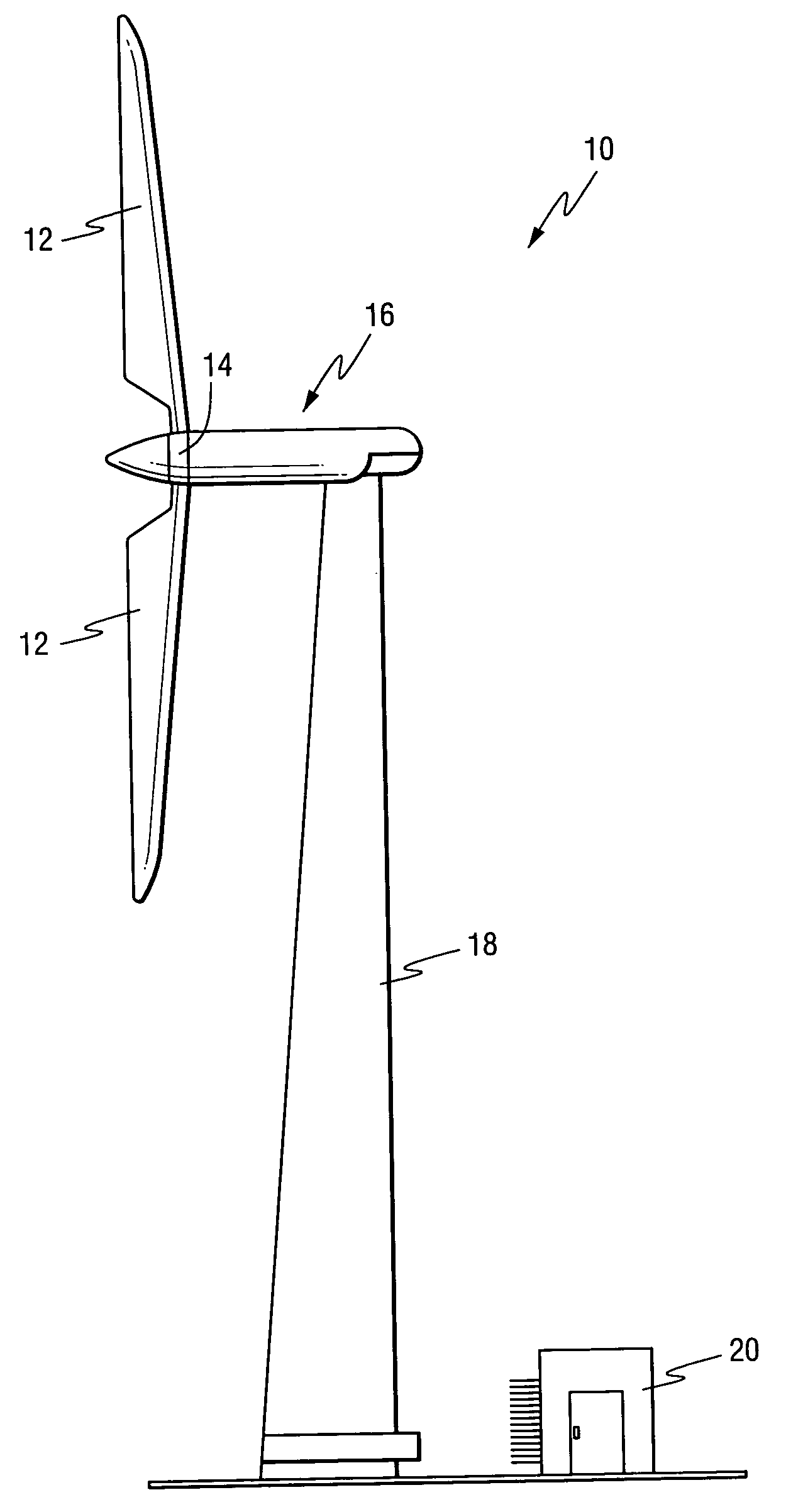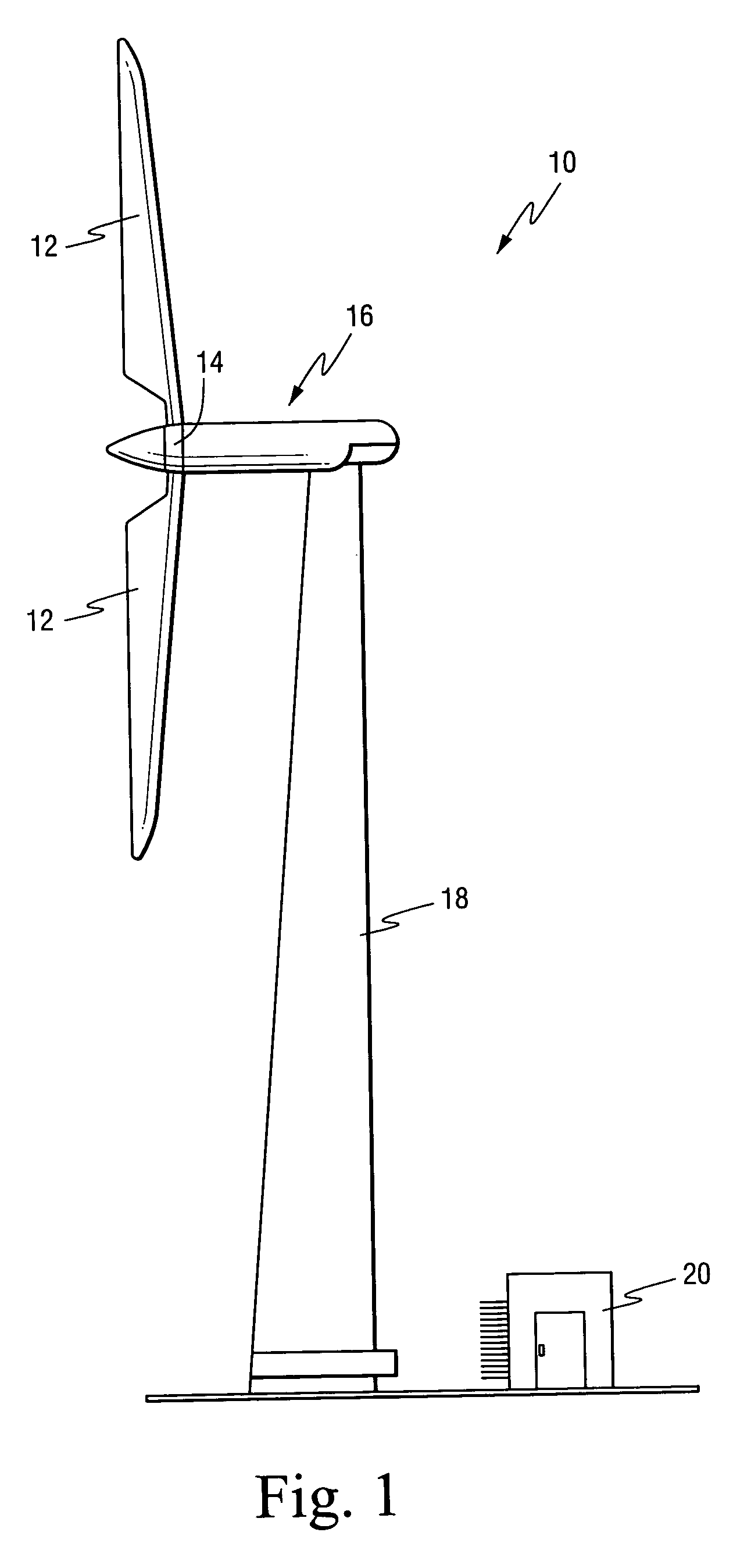Wind blade assembly and method for damping load or strain
a technology of wind blades and components, applied in the direction of rotors, other chemical processes, vessel construction, etc., can solve the problems of slow reaction rate and achieve the effects of reducing load, slow reaction rate and cost of energy
- Summary
- Abstract
- Description
- Claims
- Application Information
AI Technical Summary
Benefits of technology
Problems solved by technology
Method used
Image
Examples
Embodiment Construction
[0017]A wind turbine is schematically illustrated in FIG. 1. The turbine 10 generally includes a plurality of wind blades 12, for example two or three blades, attached to a hub 14. The blades are lightweight but stiff to reduce wind gusts. The blades may employ aerodynamic controls such as ailerons or windbrakes (not shown) to control speed. The hub is connected to a drive train (not shown) that may be flexible to minimize structural loads. This mechanism is connected to an electric generator 16. The entire mechanism is disposed on a tower structure 18 for exposure to stronger winds. A control room 20 is located at or near the turbine 10 and includes, or is operatively coupled to, a control computer to monitor wind conditions as well as current configurations and speed of the blades as detected by sensors (not shown in detail) provided on or associated with the turbine, and to implement control strategies.
[0018]Conventional pitch axis control has the ability to rotate the wind blade...
PUM
 Login to View More
Login to View More Abstract
Description
Claims
Application Information
 Login to View More
Login to View More - R&D
- Intellectual Property
- Life Sciences
- Materials
- Tech Scout
- Unparalleled Data Quality
- Higher Quality Content
- 60% Fewer Hallucinations
Browse by: Latest US Patents, China's latest patents, Technical Efficacy Thesaurus, Application Domain, Technology Topic, Popular Technical Reports.
© 2025 PatSnap. All rights reserved.Legal|Privacy policy|Modern Slavery Act Transparency Statement|Sitemap|About US| Contact US: help@patsnap.com



